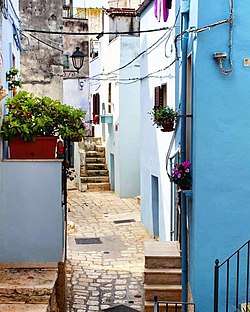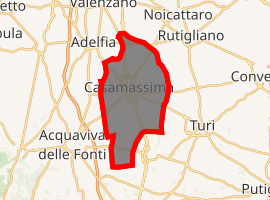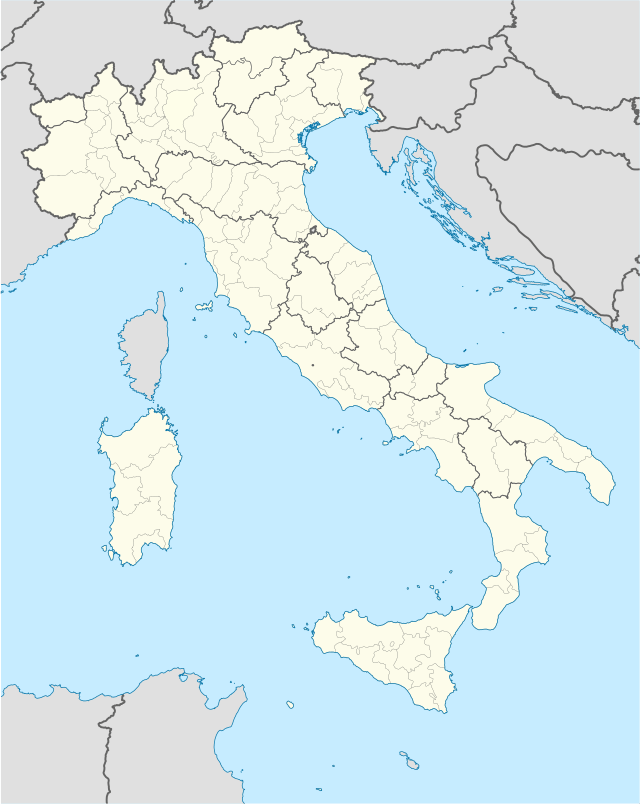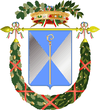Casamassima
Casamassima (Barese: Casamàsseme) is a town and comune of 19,786 inhabitants in the Metropolitan City of Bari, in Apulia, southern Italy. Is also called "The Blue Town".
Casamassima | |
|---|---|
| Comune di Casamassima | |
 | |
Location of Casamassima 
| |
 Casamassima Location of Casamassima in Italy  Casamassima Casamassima (Apulia) | |
| Coordinates: 40°57′N 16°55′E | |
| Country | Italy |
| Region | Apulia |
| Metropolitan city | Bari (BA) |
| Government | |
| • Mayor | Giuseppe Nitti |
| Area | |
| • Total | 77 km2 (30 sq mi) |
| Elevation | 223 m (732 ft) |
| Population (31 December 2016)[2] | |
| • Total | 19,846 |
| • Density | 260/km2 (670/sq mi) |
| Demonym(s) | Casamassimesi |
| Time zone | UTC+1 (CET) |
| • Summer (DST) | UTC+2 (CEST) |
| Postal code | 70010 |
| Dialing code | 080 |
| Patron saint | San Rocco |
| Saint day | Second Sunday in September |
| Website | Official website |
The town is located inland from the Italian coastline, thrives and is built on agriculture, primarily that of wine, olives and almond production. Founded around the 7th and 8th centuries, the village started as a Roman encampment, according to legend. It was called the "Castrum Maximi" which developed into the word Casamassima.
In the old city there are walls dating well back into the early 10th century, although the first recorded document stating the presence of Casamassima is the Codice Diplomatico of 962. This dates the town to be from the Byzantium Era. Before that, however, it was probably under the control of lords from other feudal systems nearby, such as Acquaviva delle Fonti or Conversano.
In 1348 it was overtaken and destroyed by Hungary's army during their campaign upon the Kingdom of Naples. Casamassima tried to resist Hungarian armies, wanting to side with the Queen of Naples, but were not strong enough. Rutigliano surrendered at first glimpse of the Hungarian soldiers and cried out obedience, but the Casamassimese were determined to fight back. The Hungarians began their siege. The men of Casamassima gathered wood and other burnable items and lit the bell tower located in the square of Casamassima ablaze. After two days the tower began to crumble and many perished. Other cities, such as Bari, Palo del Colle, and Corato did not succumb because of their usage of fortifying walls and moats. Afterwards it was rebuilt, only to then be controlled by the Principality of Taranto under the Kingdom of Naples, which eventually fell to the House of Durazzo in 1394.
Transportation
The settlement is connected with the Bari-Putignano railroad line and the Bari-Gioia Del Colle-Taranto highway.
See also
References
- "Superficie di Comuni Province e Regioni italiane al 9 ottobre 2011". Istat. Retrieved 16 March 2019.
- Population from ISTAT
